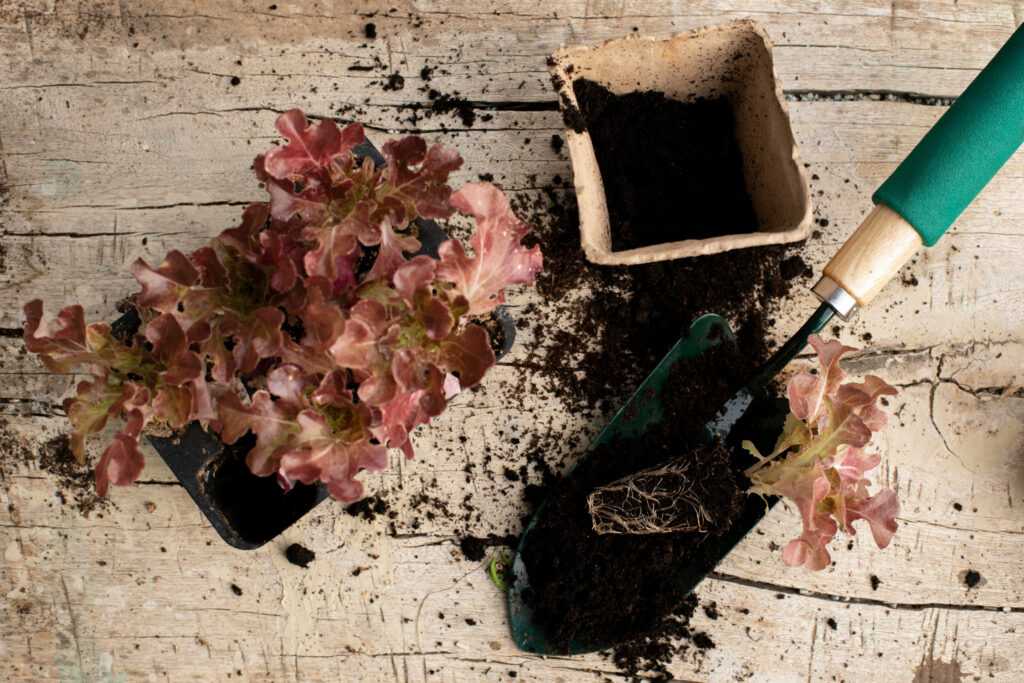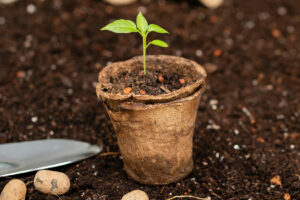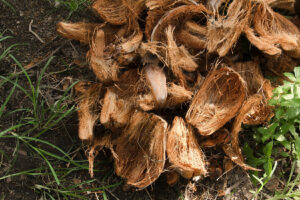18.03.2025 • 3 min read
How to Use Coconut Coir? A Step-by-Step Guide for Beginners

Coconut coir is a fantastic growing medium for both beginner and experienced gardeners. It’s lightweight, sustainable, and offers the perfect balance between water retention and aeration. But how exactly do you use it? In this step-by-step guide, you’ll learn how to make the most of coconut coir for healthy and thriving plants.
Step 1: Choose the Right Type of Coconut Coir
Coconut coir comes in different forms, such as bricks, loose fibers, chips, or a mix. Bricks are compact and need to be soaked before use, while loose coir is ready to use right out of the bag. Chips provide better drainage and are ideal for orchids or hydroponics. Choose the type that best suits your plants and growing setup.
Step 2: Hydrate the Coconut Coir
If you’re using compressed coconut coir (like bricks or blocks), you’ll need to rehydrate it before use. Place the coir in a large container or bucket and add warm water—typically about 4 to 5 liters per brick, depending on the size. Let it soak for 15–30 minutes until it expands and breaks apart easily. Fluff it up with your hands or a garden tool to achieve a light, airy texture.
Step 3: Enrich with Nutrients
Coconut coir is an excellent base, but it contains very few nutrients on its own. To support healthy plant growth, mix in essential nutrients or fertilizers before planting. You can use a balanced liquid fertilizer, compost, or a specialized coco coir nutrient mix. Make sure the added nutrients match the needs of the plants you’re growing.
Step 4: Use Coconut Coir in Your Garden or Pots
- For Houseplants: Mix coconut coir with potting soil to improve aeration and water management.
- For Vegetable Gardens: Use it as mulch or mix it into the soil to enhance drainage.
- For Seedlings and Cuttings: Pure coconut coir provides a soft, moist environment that encourages young roots to develop.
- For Hydroponics: Use coconut coir as a substrate in your hydroponic system for a stable, moisture-retaining base.
Step 5: Maintenance and Watering
Coconut coir holds moisture well but also drains efficiently, which helps prevent overwatering. Check the moisture level regularly—coir should feel damp but not soggy. Water your plants when the top layer starts to feel dry. Over time, nutrients can leach out, so it’s important to replenish them with regular feeding, especially for long-term plantings. Monitor your plants and adjust watering and fertilization as needed to keep them healthy and thriving.
Start Using Coconut Coir Today!
Ready to give your plants the perfect growing environment? Whether you’re growing houseplants, vegetables, or seedlings, coconut coir is a versatile and eco-friendly choice. Easy to use, great for roots, and kind to the planet — it’s the smart way to grow. Give it a try and see the difference for yourself!






.svg)
.svg)
